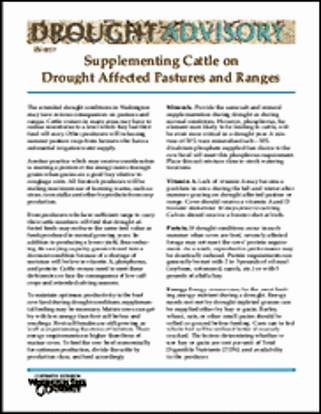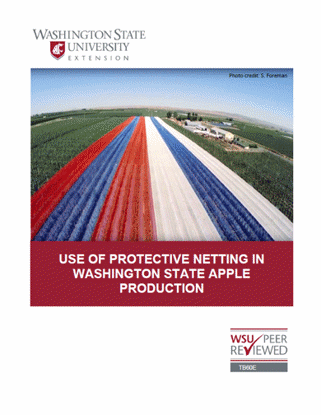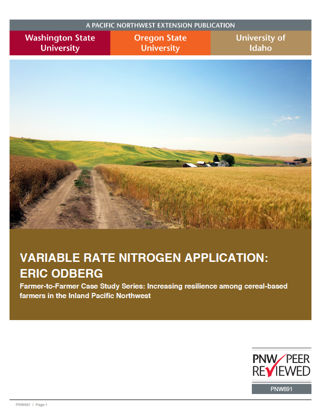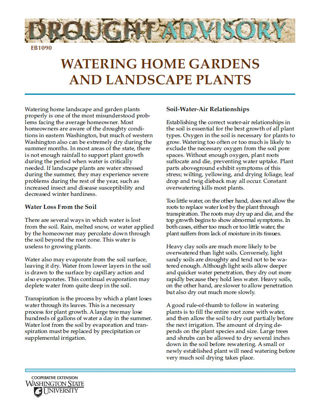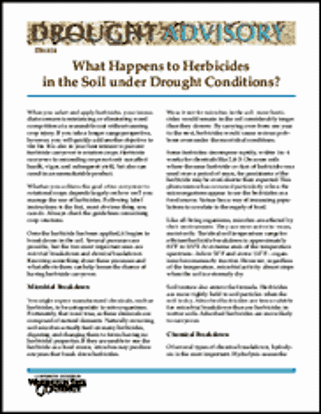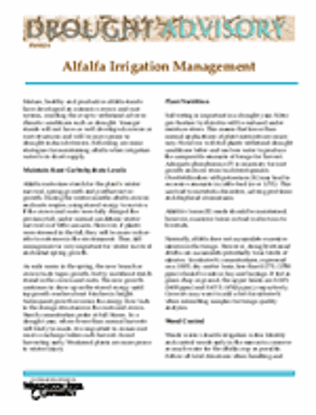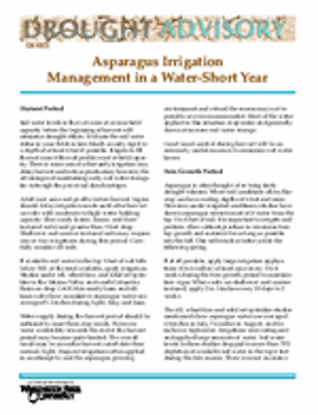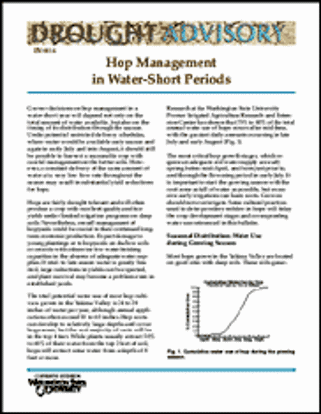You have no items in your shopping cart.
Weather and Climate
Weather and Climate
Supplementing Cattle on Drought Affected Pastures and Ranges
WSU Drought Advisory: Extended drought can reduce both the amount and quality of feed for cattle, as well as the minerals available from that feed. Cattle owners need to supplement phosphorus, vitami ...
$0.00
Use of Protective Netting in Washington State Apple Production
Exclusion, continuous over-the-top, louvered or partial overhead, or drape netting: but how can protective netting affect and benefit WA State apple production? ...
$0.00
Variable Rate Nitrogen Application: Eric Odberg (Farmer to Farmer Case Study Series)
Eric Odberg farms near Genesee, Idaho, in an area receiving about 22 inches of precipitation annually. In this publication, Odberg discusses his experiences with variable rate nitrogen application and ...
$0.00
Watering Home Gardens and Landscape Plants
Making the most of available water is a challenge in times of drought. Native plants and grasses survive the best. Authors discuss the relationship of soil, water, and air for plant health. Do you rea ...
$0.00
What Happens to Herbicides in the Soil Under Drought Conditions?
WSU Drought Advisory: This bulletin describes the microbial and chemical breakdowns of herbicides in the soil, both of which are affected by drought, and cautions farmers about carryover problems wit ...
$0.00
WSU Drought Advisory: Alfalfa Irrigation with Reduced Water Supplies
Alfalfa grown for forage in the arid Northwest requires 1.8-acre feet to 3.2-acre feet of water per year, depending on length of the growing season. This drought advisory recommends steps to take in l ...
$0.00
WSU Drought Advisory: Asparagus Irrigation in a Water-Short Year
The primary water absorption root zone for asparagus is down three to four feet in irrigated fields. Fill root zone early when water is short. Weed control becomes especially important in a drought ye ...
$0.00
WSU Drought Advisory: Hop Management in Water-Short Periods
Hop plants are fairly drought resistant. Author offers measures to ensure greater success under dry conditions. Discusses factors influencing some cultivars and water and fertilization patterns for di ...
$0.00
WSU Drought Advisory: Irrigation System Evaluation
This drought advisory bulletin lists methods of evaluating how much water a sprinkler system can deliver in a given amount of time, to help farmers schedule irrigation scientifically for maximum use o ...
$0.00

